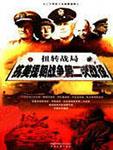Chapter 1 Reasons for the outbreak of the Korean Civil War
After the outbreak of the Pacific War, U.S. President Roosevelt considered placing Korea under trusteeship after the war as a preparatory stage for the Japanese colony to eventually gain independence.
In November 1942, Roosevelt said that North Korea should go through "a post-war training period to eventually gain independence and sovereignty." The Cairo Declaration of December 1, 1942 stated:
Our three major allies cherish the enslaved treatment of the Korean people and have decided to make North Korea free and independent within a certain period of time.
At the Tehran Conference, Stalin expressed "full approval of the Cairo Declaration and all its contents".Roosevelt said after the meeting that Stalin had told him: "The North Koreans are not yet capable of implementing and maintaining an independent government, and they should be placed under 40-year guardianship." During the Yalta Conference in February 1945, Roosevelt proposed to Stalin that after the war, the United States, the Soviet Union, and China would jointly host Korea for 20 to 30 years.Stalin agreed to trusteeship, but believed that "the shorter the trusteeship period, the better."
As Japan failed step by step, by the summer of 1945, how to occupy Korea became an urgent problem to be solved.Truman had considered the United States to preemptively occupy North Korea alone, but considering the reduction of American casualties, it was necessary for the Soviet Union to assume more obligations in the war against Japan on the Korean peninsula, so the United States finally decided to divide the occupation by the American and Soviet armies.At the time, the U.S. government also believed that it was not advisable for the United States to assume full responsibility for the occupation of North Korea because it would affect its ability to control other more important regions.At the same time, the United States was unwilling to allow the Soviet Union to occupy North Korea alone, because "a Sovietized North Korea is likely to threaten the position of the United States in the Pacific."
After the Soviet Union entered the war, the Soviet Red Army quickly entered North Korea from northeast China, while the US military was still in Okinawa, 600 miles away from North Korea.If an agreement with the Soviet Union on their respective jurisdictions is not reached as soon as possible, the Soviet Red Army may soon sweep across the Korean peninsula.
In the middle of the night from August 10th to 11th, the U.S. State Department, Army Department, and Navy Department Coordination Committee held an emergency meeting at the Pentagon.The representatives of the State Department mainly considered the political aspect, and proposed that the area where the United States accepted Japan's surrender should move as far north as possible.But later Colonel Dean Rusk, Assistant Secretary of State for Far Eastern Affairs during the Korean War, pointed out that the military "lacks the forces at hand that can be put into use immediately, coupled with factors such as time and space, to grab the Soviets before they enter the area." There will be difficulties advancing further north."
After discussion, the meeting proposed that the 38th parallel north latitude be the temporary boundary line between the armies of the United States and the Soviet Union.The line, which includes two-thirds of North Korea's population and the former capital of Seoul, is in the U.S.'s favour.
On August 15, Truman notified Stalin of the "General Order No. 1" concerning the surrender of the Japanese army, which stipulated that the Japanese troops stationed in North Korea north of the 38th Parallel surrendered to the Soviet Army, and the Japanese troops stationed in North Korea south of the line surrendered to the U.S. Army .The next day, Stalin wrote back agreeing to this arrangement.Rusk and other U.S. officials were surprised that Stalin did not disagree.Steck analyzed in his book "Towards the Road to Confrontation":
Perhaps he (Stalin) still wished to participate in the occupation of Japan, seeing the concessions to the United States on Korea as a means to that end.In addition, he is likely to interpret the line as a permanent dividing line dividing spheres of influence on the Korean peninsula.At the turn of the 19th and 20th centuries, Russia and Japan negotiated the 38th parallel as a possible demarcation of their spheres of influence.
Soviet troops entered North Korea on August 15.When the order to accept the surrender was transmitted to the battlefield, the Soviet troops had crossed the 38th parallel and moved along the road to Seoul.But after they received the order about the demarcation line for surrender, they quickly withdrew to the north of the 38th parallel.
The U.S. 7th, 6th, and 40th Infantry Divisions, led by John Hodge, commander of the 24th Army, began landing in southern Korea on September 8.The first U.S. military to reach North Korea was the 7th Infantry Division. The code name of this operation was "Blacklist 40". On the 10th, U.S. troops entered Seoul.Arnold, the commander of the US 7th Division who arrived first, was appointed by Hodge as the military chief in North Korea.
After the US and Soviet troops entered North Korea, they divided North Korea into two, cut off railways, highways, and telecommunication connections, and then blocked the 38th parallel, effectively cutting off the connection between North and South Korea.The United States and the Soviet Union artificially created the division of Korea and planted the seeds of disaster for the outbreak of the war.

